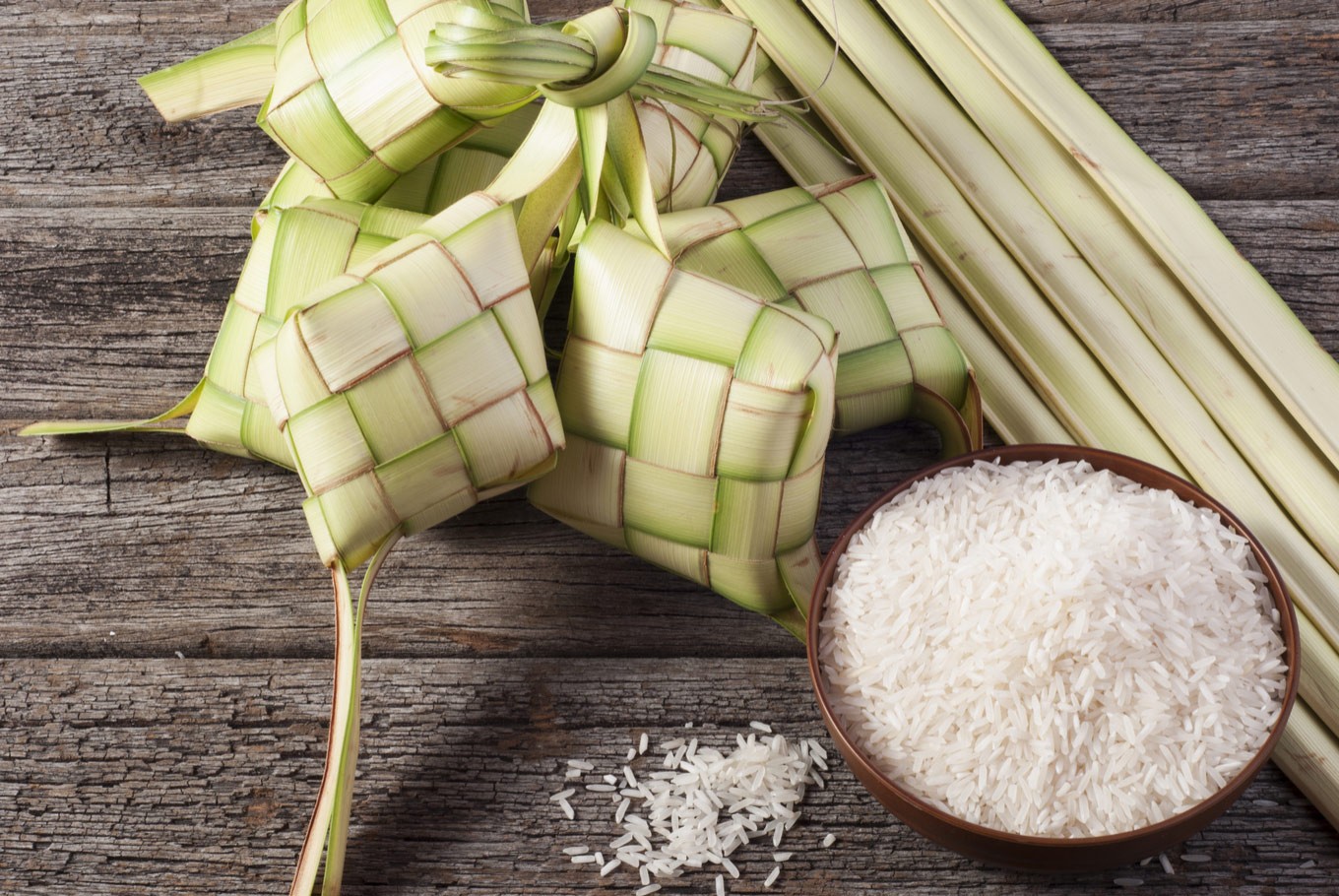Popular Reads
Top Results
Can't find what you're looking for?
View all search resultsPopular Reads
Top Results
Can't find what you're looking for?
View all search resultsEssay: Happy Lebaran, enjoy 'Ketupat'
The tradition of consuming ketupat is said to originate from the symbol of the Javanese language expression, “ku” means admit, and “pat” or “lepat” means mistake.
Change text size
Gift Premium Articles
to Anyone
L
ebaran, or Idul Fitri, the biggest Muslim celebration in Indonesia, is just around the corner. The holiday marks the end of the fasting month of Ramadhan, so you know food plays an important role, perhaps even more so than with other celebrations.
In the tradition of Indonesian society, one of the foods served during Idul Fitri is ketupat.
Ketupat is a compressed rice dish cooked in diamond-shaped parcels made from coconut fronds. It has a very bland taste and is normally served with other dishes such as rendang, a dried beef curry.
Ketupat is easy to make at home, with the exception of the parcels, which require a bit of skill. The best place to buy ketupat parcels are at traditional markets.
Some foods that use ketupat among others kupat tahu (Sunda), grabag(Magelang), kupat glabet (Tegal), soto Makassar (Makassar), lotek and gado-gado. Ketupat can also be served along with satay, though lontong (rice cake) is more common.
During Idul Fitri, ketupat is not only a distinctive menu offered to visitors but also it has deep meaning, not only in terms of religion but it also attaches cultural meaning to the festivity.
The tradition of consuming ketupat is said to originate from the symbol of the Javanese language expression, “ku” means admit, and “pat” or “lepat” means mistake.
So the literal meaning of ketupat is to admit the mistakes one had made. It has been used by Sunan Kalijaga in spreading Islam in Java, which at that time there were still many who believed in the sanctity of ketupat.
People hang it above the door of the house to be talisman. It was believed to have magic power so that it was needed to be well treated and maintained. Otherwise the miracle of ketupat would not be sustainable.
Therefore, some people at certain places in Java make ketupat on a normal day considering its unique meaning. It is only served during Idul Fitri and five days after the Islamic day celebration.
Even there are several areas in Java which simply offer ketupat to visitors on the seventh day after Idul Fitri, which is called Hari Raya Ketupat (Ketupat Eid). The process of long rooted cultural assimilation and belief has finally shifted ketupat sanctity into Islamic tradition.
In Lombok, West Nusa Tenggara, people celebrate Lebaran Topat on Sunday. They cook Ketupat or Topat and other cuisines to share with their neighbors. Residents gather in mosques called Rowah and visit the tombs of Muslim preachers at Loang Baloq cemetery in Mataram and Batu Layar cemetery in Sengigi. The tradition known as Dwirgami has existed here since the 17thcentury, it was introduced by a Javanese Muslim missionary called Sunan Prapen.
In this tradition, ketupat becomes the main menu on offer when Muslims celebrate Idul Fitri as the perfect moment to apologize to each other and to admit mistakes. The way to slice ketupat has a particular meaning. Ketupat is usually sliced into four parts with four meanings: laburan, luberan, lebaranand leburan.
Laburan means to clean. Houses are cleaned and repainted so the dirt is gone and the house will look like new. Luberan refers to all types of menus which are overflow their capacity. Likewise, the streets become crowded and jammed owing to the fact that the vehicles spill onto the streets of the village.
Lebaran means the openness of door for forgiveness, which is characterized by the opening of the house to receive guests who visit. Leburan emphasizes melting sins of human beings due to mutual forgiveness. Thus it makes sense that many are willing to travel long distances from city to village despite risky accident.
In West Sumatra, however, ketupat is not a typical culinary item. In Minangkabau, ketupat becomes a complementary choice of food other than rice. Minangkabanese usually serve various foods and some cakes — wet cakes or pastries — and lemang (sticky rice cooked in bamboo). The menu offered is also different depending on the custom of nagari (village).
Nowadays ketupat is one of the favorite culinary items during Idul Fitri celebration. Even after performing Eid prayer and forgiving one another, most Minangkabau people will choose to eat ketupat as the starter menu.
Unlike other regions where ketupat is served with a generous helping of gulai opor ayam (chicken stewed in coconut milk), in West Sumatra ketupat is served with jackfruit curry or tauco sauce. In addition to its yummy taste, the taste of this curry is very special mixed with rendang goulash, spicy cassava chips and other menus. Each area in West Sumatra will serve different taste of ketupat due to distinctive taste of diverse Minang culinary variants
A happy and blessed Eid to everyone.
***
The writer, a lecturer in the Faculty of Cultural Sciences at Andalas University, Padang, is pursuing doctorate at Deakin University, Australia.
Your Opinion Matters
Share your experiences, suggestions, and any issues you've encountered on The Jakarta Post. We're here to listen.
Thank you
Thank you for sharing your thoughts. We appreciate your feedback.











